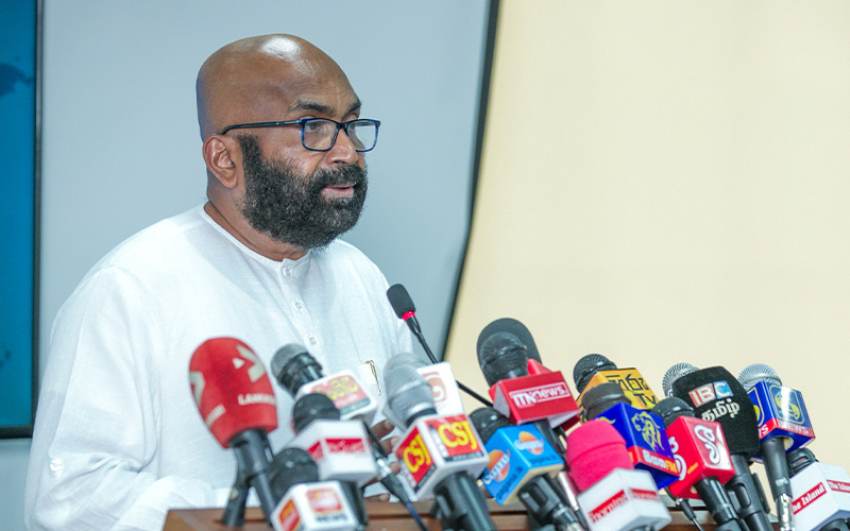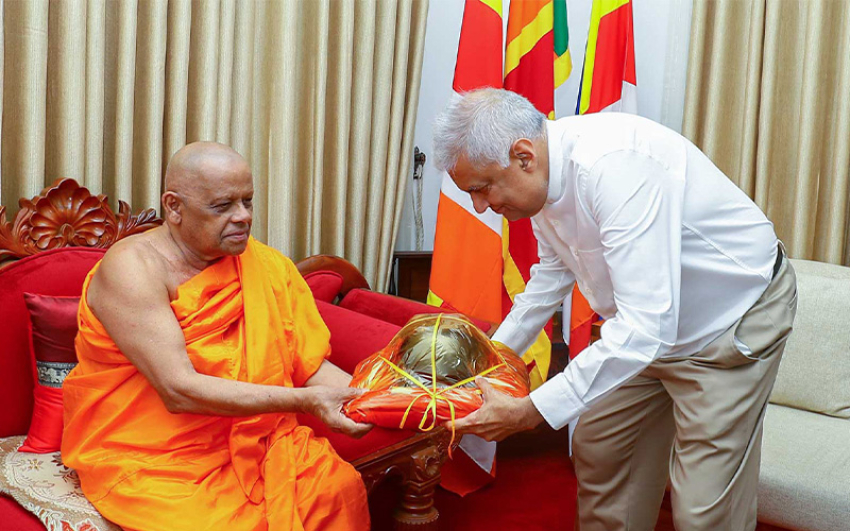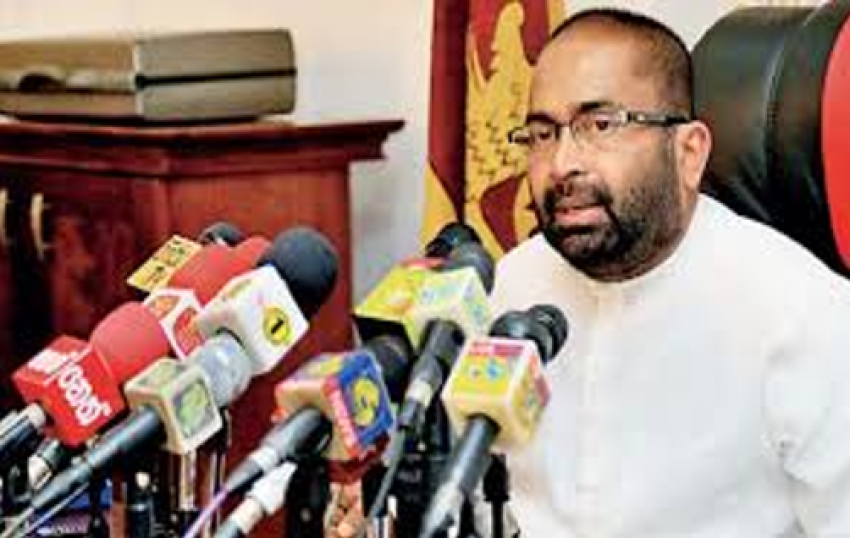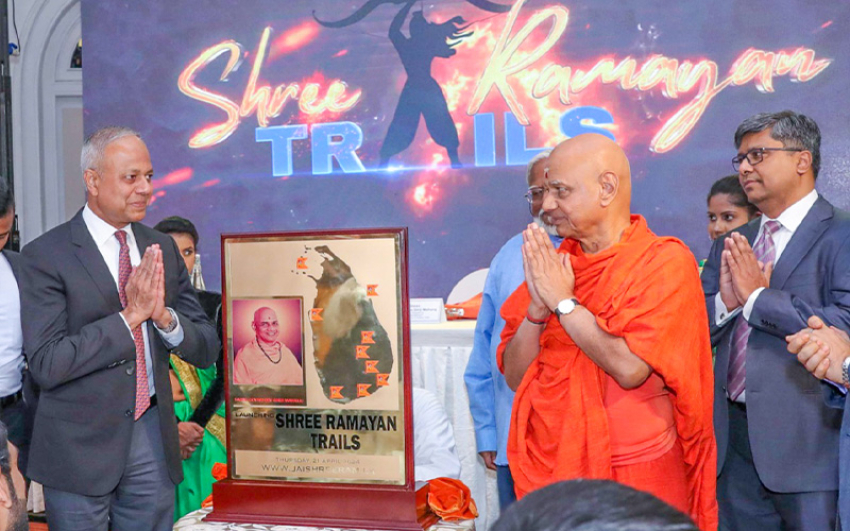For better or worse, small but incredibly influential groups can change the course of political debate. But is this leading us to hold more polarised views?
Do you get the feeling that political debate is increasingly polarised? Certainly in the country where I live, the UK, politics appears to be at an impasse. The impression I have is that the same factions seem to be stubbornly rehashing the same debates with little compromise. It is frustrating, quite boring and from a social science point of view a little perplexing.
But what if polarisation is entirely to be expected? And what if it is not the result of ignorance or small-mindedness, but a perfectly human response to our fallibilities and flaws? Some of the latest research shows us that one reason for the polarisation we see today comes down to a few, incredibly influential minorities.Social scientists have historically explained polarisation as the result of irrational thinking. Surely, any reasonable, although mis-informed, person will accept when they are mistaken, the argument goes. Someone who stubbornly sticks to their wrongly held beliefs when presented with evidence is, you would think, clearly acting irrationally.
Men shout at an anti-immigration rally in the US Political polarisation is not simply a result of irrational thinking (Credit: Getty Images)
But a recently published study challenges that common-sense theory. In fact, polarisation could happen in populations of perfectly rational people when you consider the limitations of the human brain.
One issue with studying rational and irrational beliefs is that no human can be said to be completely rational. It is also hard to predict when someone might react rationally or irrationally, or to control that behaviour in an experiment. So, a group of researchers from the US, Japan, Belgium and South Korea worked with computer models of agents who they programmed to act either rationally or irrationally.“These agents were assigned an opinion, but could change their opinion after interacting with other agents,” says Jiin Jung, co-author of the paper and researcher at Claremont Graduate University in California, US. If they were all acting rationally, you would expect them to share their opinions and sometimes to alter their views if they found that others’ arguments were stronger than their own.The agents were made to behave rationally or irrationally by manipulating their memory. Some of the agents were given perfect recall, while others were given a more fallible memory.
People become more resistant to polarisation if they have longer memories “Those with unlimited memory could remember any type of argument from any perspective,” says Jung. “Those who could forget were split into some who randomly forgot and others who forgot weak arguments or old arguments.” “Agents with unlimited memory did not become polarised,” says Jung. But no human has a perfectly infallible memory. What is more intersting is what happens when we account for the fact that our attention spans, memories and energy to debate can change.
“If we are rational with a limited memory span, that causes the bipolarisation of opinion in a group,” says Jung. “Even though we are completely rational, our society can become polarised because we forget the arguments of others.”
This research can help to guide how we approach talking about polarised groups, says Jung. When we meet someone who holds a different belief, we should try not to dismiss it as irrational. Instead of thinking that we need to “correct” their thinking or re-educate them, we could reflect on what might be affecting their judgement. Poor memory, stress, uncertainty, discrimination – all these things could be pushing people away from the norm.
A group of teenagers are involved in a debate
Trying to "correct" people who disagree with us is unlikely to help the problem of polarisation (Credit: Getty Images)
Outsiders
We might all be guilty from time to time of lacking the energy or willpower to test our beliefs. So, if mostly-rational thinkers are vulnerable to polarisation, then what pushes them in this direction? Small minorities with a strong view can play a surprisingly large role, says Amber Gaffney, a social psychologist from Humboldt State University in California, US. But not in the way you might expect.
“Lots of people don’t consider themselves extremists,” says Gaffney. “But they might have more in common than they realise. When the Tea Party had a larger influence, their more extreme messages were often too much for moderate conservatives. But moderate conservatives moved towards the Tea Party in other ways.”
Both Tea Party members and moderate conservatives identify as Republicans in the US. As a result, moderate conservatives may well see themselves as more like the Tea Party than the Democrats, even though moderate conservatives may share more in common with moderate Democrats. In this situation, the Democrats are the out-group – they are the outsiders.
A man holds a small US flag in his hand
One effect of the Tea Party's rhetoric was to pull moderate conservatives away from the centre ground (Credit: Getty Images)
“Adopting something from the fringes of your group allows you to pull your own group away from what you don’t want to become,” says Gaffney. “The Democrats were the out-group and the Republicans [unconsciously] used the Tea Party to pull away from them.”
The Tea Party’s rhetoric is extremely conservative. In an address to a large convention of followers of the movement, one Tea Party leader recited some of their shared concerns: “This did not begin when we voted for Obama; it started when we voted out school prayer; when we legalised abortion; when husbands and wives permit divorce to be an option and give up on their love for each other and marriage vows before God. These are just a few ways we have abandoned God and the principles that He created.”
You might not immediately change your attitude, but it weakens your other beliefs, meaning they might change later
Moderate conservatives might not agree with this stance. However, research shows that by associating with extreme minorities your opinions can change in surprising ways. Gaffney’s research builds on work conducted by William Crano, who established that a clear message, even if you do not agree with it, can be enough to move you on other topics.
In one of his studies, Crano observed minority groups of students who advocated against allowing gay people to serve in the military. The majority of students did not align themselves with the policy, but they became more conservative on other issues like gun control reform.
“Often when someone is on the fringes we don’t want to go along with them – we don’t want to align ourselves with minority positions because it pokes a hole in our thinking,” says Gaffney.
But, Crano suggests extreme opinions put pressure on your entire belief system. You might not immediately change your attitude, but it weakens your other beliefs, meaning they might change later.
Protesters in London hold a sign that reads "let us be heard"
Even if you do not agree with a group's message, it can still influence the way you think (Credit: Getty Images)
Recently in the UK, Scott Mann, a previously little-known member of parliament, tweeted this: “Every knife sold in the UK should have a GPS tracker fitted in the handle. It’s time we had a national database like we do with guns. If you’re carrying it around you had better have a bloody good explanation, obvious exemptions for fishing etc.” Cue a lot of people pointing out the flaws in this idea.
Although the idea of fitting every knife in the UK with a GPS tracker is probably a non-starter, this could be a good example of what Gaffney and Crano refer to. Most people might say that GPS trackers would not stop knife crime, but could this tweet be acting as a Trojan horse to shift people’s attitudes on related topics, such as street crime or policing?
Small is powerful
Persistence and consistency in support of minority opinions is key to being influential. “Minorities that have a consistent behaviour style or risk their own self-interest have the most influence,” says Jung. “When you think about Tibetan monks who burn themselves, the extreme nature of what they did shocks more moderate people. If I have a not-very-strong opinion and then I see someone behave like that, suddenly I think that maybe I am wrong and need to change my attitude.”
When people feel uncertain they use strong values to define themselves – Amber Gaffney
The size of the group is also important. Being small can be very useful. When groups are small they are more distinctive compared to large groups. Small groups might have one, clear message, where larger groups contain multiple voices sharing different messages This distinctiveness makes smaller groups more influential, particularly if they are very consistent in their views. Likewise, the more uncertainty there is in a population, the more influential a minority group becomes.
“When people feel uncertain they use strong values to define themselves,” says Gaffney. “When people are highly uncertain of themselves and their motivations, different types of leadership become more attractive, like autocratic leaders in democratic societies.” Authoritarian leaders often play on this uncertainty, says Gaffney, using rhetoric like “We’re losing who we are”.
President Putin attends a formal function in Italy
When people feel uncertain they are more drawn to authoritarian leaders (Credit: Getty Images)
“It’s sad because when people are uncertain about their place in the world, they try to find a group that is very radical, that has an authoritarian leader that has a clear norm and clear boundaries,” says Jung. “When people are uncertain about who they are, positivity and negativity are less important – so they’re not necessarily thinking about whether their actions are good or bad.” This is particularly the case around marginalised groups, Jung adds. “Oppressed people see the majority as bad, so the minority must be good.”
But it is worth remembering that the same principles can be used to bring about positive social change. In fact, says Gaffney, some of the biggest positive social changes have been the result of minority groups with strong cohesion and a clear identity.
“When we see positive social change, it comes from a minority. Think about the civil rights movement, women’s vote,” says Gaffney. “They are all incredibly positive, but they started with minority groups – they were the outsiders working against the norm.”
We are all part of small sub-groups nested within complex networks in society. Extreme minorities can have both positive and negative impacts on the larger whole. And even when you dismiss someone’s radical idea as nonsense, remember that they might already have changed how you think.
The hidden ways that faces shape politics
A candidate’s appearance can influence votes more than you think – so what exactly is a good look for a politician?
George Washington knew it. He was particularly conscious of his forehead, which he believed would look better if it was even bigger. For maximum emphasis he’d pull his hair back into a tight ponytail – then finish the powerful, masculine look with ringlets of curls and a ribbon.
The face of US political power
To find out hat the average American politician looks like, BBC Future commissioned a composite face, which is a blend of all US Senators and House representatives. Click here to discover what it looks like, and what it says about US political representation in 2017.
Abraham Lincoln knew it too. The public delighted in mocking his face, which was unusually angular and asymmetric. Though he’s remembered as one of America’s greatest presidents, at the time he was deeply unpopular. He was as ugly as a scarecrow, they said. He was ungainly and cadaverous, they said. Eventually even the man who sculpted his likeness at Mount Rushmore joined in, saying his face was “primitive” and “unfurnished”.
We tell ourselves that what we really want from our politicians is competence, a dash of charisma and a bucket load of sensible ideas. But that might be a tad optimistic. Evidence suggests that the facial appearance of a politician significantly shapes voting decisions – and we often may not even realise it is happening.
George Washington and Abraham Lincoln (Credit: Getty Images)
George Washington and Abraham Lincoln both were aware of how their faces shaped people's opinions (Credit: Getty Images)
Psychologists have known for years that first impressions play a far bigger role in our lives than we’d like to think. For example, we can’t help suspecting that those with doe eyes and pudgy lips are trustworthy souls, while those with wider faces have a tendency for aggression.
The judgements are involuntary, unconscious and happen at frightening speed
The judgements are involuntary, unconscious and happen at frightening speed: some are made in as little as 33 thousandths of a second, which is barely enough time to register what you’re looking at. “In our studies people say ‘this is ridiculous, I barely saw that was a face’,” says Alexander Todorov, a psychologist from the Princeton University and leading expert in the subject.
These “thin slice” character judgements are based on the slimmest of clues. And yet they have far-reaching implications, from where you work to who you marry. Naturally, we expect CEOs and military personnel to look dominant, while those in caring professions should be baby-faced.
If you’re born with the right aesthetic, you’re more likely to be hired in the first place and may find it easier to rise through the ranks. On the other hand the wrong face – such as one that looks serious if you’re dating or stereotypically criminal in court – could blight your romantic prospects or even land you in jail.
But perhaps the most uneasy finding of all is how these snap judgements and prejudices shape politics. The science is not quite 40 years old, but the sheer weight of evidence is overwhelming. Though voters tend to have rational ideas about what makes a good leader – “The characteristic that always wins is competence,” says Todorov – the way these qualities are assessed is spectacularly reckless. In the end we discern it from the candidate’s face.
George Washington had a forehead he wanted to show off (Credit: Getty Images)
George Washington had a forehead he wanted to show off (Credit: Getty Images)
The effect is so powerful, psychologists have correctly predicted the outcome of elections in the US, Bulgaria, France, Australia, Mexico, Finland and Japan, and the share of votes in US Senate, House of Representatives and gubernatorial elections using this characteristic alone.
For these studies, participants weren’t told anything about the candidates – just shown a photograph of their head and shoulders and asked to rate their competence. The method can even be used to predict the results of elections in foreign countries – and works whether you ask 90-year-olds or five-year-old children.
“There are a lot of great candidates out there who have a much lower chance of being elected because of their appearance. It’s probably not good for democracy,” says Gabriel Lenz, a political scientist from the University of California, Berkeley. How has this happened? Should we be worried? And what can we do about it?
Statue of Buddha
Statues of Buddha are depicted with drooping lobes, which leaders coveted in ancient China (Credit: Getty Images)
The idea that facial appearance can influence how a population sees its leaders actually dates back thousands of years. In ancient times it was called the art of “physiognomy”, the belief that a person’s character can be judged from their face.
In Eastern cultures it was taken very seriously indeed. One Chinese king, Jianzi of Zhao, believed the face was as good a way as any to assess his grown sons as potential heirs. In particular, a noble pair of earlobes was considered auspicious. Historical documents from China boast of emperors with lobes so long, they dangled down to brush their shoulders. The preference even made its way into religious iconography: statues of Buddha are depicted with drooping lobes to this day.
In ancient Persia, honours were only bestowed upon those with curved, beak-y noses
The Persians were more into noses. It began with the founder of the Achaemenian Empire, Cyrus the Great. His notable nose was long, curved and sharp, and set the royal standard for generations. Honours were only bestowed upon those with the curved, beak-y kind and young men would pinch theirs with bandages in the hope of coaxing it to grow that way.
Cyrus the Great and Benjamin Franklin (Credit: Getty Images/Alamy)
Cyrus the Great was a Persian leader lauded for his nose, while artists lamented not putting Benjamin Franklin's corpse on view (Credit: Getty Images/Alamy)
By the 18th Century, physiognomy had become something of a pseudoscience. The Swiss pastor Johann Lavater analysed thousands of faces to narrow down the features that were linked to certain dispositions. In his bestselling book, Physiognomischen Fragmente, he laid out a hundred systematic rules, many of which would later be disproven. Suddenly workers, neighbours and politicians could be favoured or rejected not just on their social class and wealth, but their facial features too.
Across the globe, looking presidential became crucial to being taken seriously. Portraits of president George Washington were altered to enhance the arch of his forehead, while artists lamented not preserving Benjamin Franklin’s corpse for public view – the masses really needed to see his exemplary physiognomy for themselves.
Today’s politicians are no less image conscious. In Washington DC, business for plastic surgeons and dermatologists is booming; this is a place where faces seem to wrinkle at an unnaturally slow pace. It’s even been used as a political weapon. Back in 2004, Ukrainian presidential candidate Victor Yushchenko developed chloracne, pustules and lesions associated with over-exposure to the toxic chemical dioxin. Tests revealed the level in his blood was 6,000 times above normal; he alleged that he had been poisoned.
Victor Yushchenko (Credit: Getty Images)
Victor Yushchenko's face was damaged with poison, possibly to affect his electability (Credit: Getty Images)
While these modern politicians might not be using debunked physiognomy to guide them, they are probably right to be image-conscious. Though our first impressions are usually wrong, we almost always agree on them. “There’s something very reliable about these judgements,” says Jon Freeman, a psychologist at New York University. “They’re consistent across thousands of people.”
The bias favours politicians who appear competent, but also reliable, older, attractive and familiar. In an election, candidates with this countenance tend to win with a wider margin of victory. Many of these features are self-explanatory, but what exactly a competent face looks like exactly is harder to pin down.
The bias favours politicians who appear competent, but also reliable, older, attractive and familiar
“In an ideal world you would randomly assign some candidates to have plastic surgery and go from there,” says Lenz. However, a slightly less invasive way to look for clues is to make one artificially. Back in 2010, together with Christopher Olivola from Carnegie Mellon University, Todorov did exactly that. The plan was to create a batch of extremely-competent looking faces and see what kind of features they ended up with.
To set up the experiment, first they taught a computer what a strong leader looks like by randomly generating faces and asking volunteers to rate how able they looked. Then they used this knowledge to create a range of faces, some of which had been enhanced to look hyper-competent.
As the attribute increased, they underwent a radical transformation: the gap between the eyebrows and the eyes shrank, faces became less round, cheekbones became more pronounced, and jaws became more angular. The competent faces were the most attractive, mature and masculine. “It’s a bit disturbing because you can see that it’s gender biased. It’s essentially a male face that people want. The face which is incompetent is a female face,” says Todorov.
Theresa May
Female faces like Theresa May's are not associated with competence in psychology studies - but is that a product of cultural bias? (Credit: Getty Images)
Are these preferences hardwired from birth – or are they learnt? It’s a mystery that has been hotly debated for years, partly because it’s very difficult to study. It’s not like scientists can lock babies away from the outside world and ask them what kind of leaders they prefer when they grow up – though similar experiments have been performed in monkeys. A consensus is emerging, however.
“I tend to favour a more cultural association,” says Freeman. He’s spent years studying snap judgements and the hidden ways they lead to sexism in politics. “I think there’s much more evidence that our ideas about gender and competence reflect perceptions embedded in our culture.”
Take the 115th United States Congress. As BBC Future has discovered, blending together photographs of every single member yields a face that’s good-looking, middle-aged and distinctly masculine. This depressing finding makes a lot of sense when you consider that the current government is 80% male and getting on a bit; the average age is 57.8 years for members of the House and 61.8 for Senators.
Globally, there are just nine heads of state under 40 and 15 female heads of government or state. No wonder this isn’t how we view competent leaders.
If our perceptions are learned, they’re likely reversible
Which brings us to the good news. If our perceptions are learned, they’re likely reversible. “The more women you have in successful leadership positions, the UK being a good example, the more people might change their minds,” says Todorov.
The ground is gradually shifting. Over half of current woman world leaders are the first in the history of that country. And some cultures are way ahead. As of January 2017, Rwanda had the highest number of women parliamentarians, who hold 63.8% of seats in the lower house.
Donald Trump's hair
Donald Trump's hair - and its maintenance - has been a constant source of fascination to many people (Credit: Getty Images)
The US government is gradually getting older and Donald Trump was the oldest president when he entered office, at 70 years old. But elsewhere, the public are waking up to the potential of fresh-faced 30-somethings. French President Emmanuel Macron is just 39, while Austria recently elected Europe’s youngest leader, Sebastian Kurz, who is just 31.
Some biases are harder to get away from, however. In psychological circles it’s a well-known fact that people tend to develop a liking for things, such as their own face, merely because they are familiar with them. This “mere-exposure-effect” is a potent secret force in everyday life – the very reason companies pour billions into branding and songs become more catchy the hundredth time you hear them.
The images had been manipulated – they were actually a blend, a 60:40 mashup of the candidates and the unknowing students
For a study in the journal Political Psychology, psychologists from Stanford University tried a sneaky experiment. In the run-up to the 2006 Florida gubernatorial election, they conducted a mock election by showing undergraduates photographs of the running candidates and asking who they’d vote for. But the images had been manipulated – they were actually a blend, a 60:40 mashup of the candidates and the unknowing students themselves. Naturally, the students much preferred those who resembled them.
It’s notoriously difficult to win an election as an outsider, especially if you’re challenging the incumbent. And since they tend to have the most familiar faces, the bias makes it even harder. Television and other visual media may be making it worse.
Today the average American watches a whopping five hours of television every day. In the build-up to the US presidential poll in 2016, well-meaning voters sat through 110 million hours of politics on YouTube alone and a record 84 million people tuned in to watch the first presidential debate. This unprecedented exposure to our politicians may be having some insidious side-effects, from supercharging the familiarity bias to clouding our judgement of presidential debates.
It’s thought to have been happening since the very first televised debates in the 1960s. As more and more people bought televisions, the margin of victory for incumbents widened.
Besides the familiarity effect, politicians with the most compelling faces are known to benefit disproportionately from television coverage, especially among the least educated voters. “Even if the public try to avoid politics they can’t help being affected,” says Lenz, who co-authored the study.
Todorov describes first impressions of faces as mental shortcuts that help us to make decisions rapidly. The key to fighting back lies in making it easier to learn about the candidates, so that voters can replace shallow decisions with rational ones, and avoiding practices that actively encourage a reliance of snap-judgements. “In some countries they put photographs of the candidates next to their names on the ballot paper,” says Lenz.
Limiting the influence of face-ism in politics is no easy task, but doing so will be a powerful step towards a greater diversity in government and ultimately, a more democratic society. Now that’s something that George Washington can really be proud of. That, and his e




















